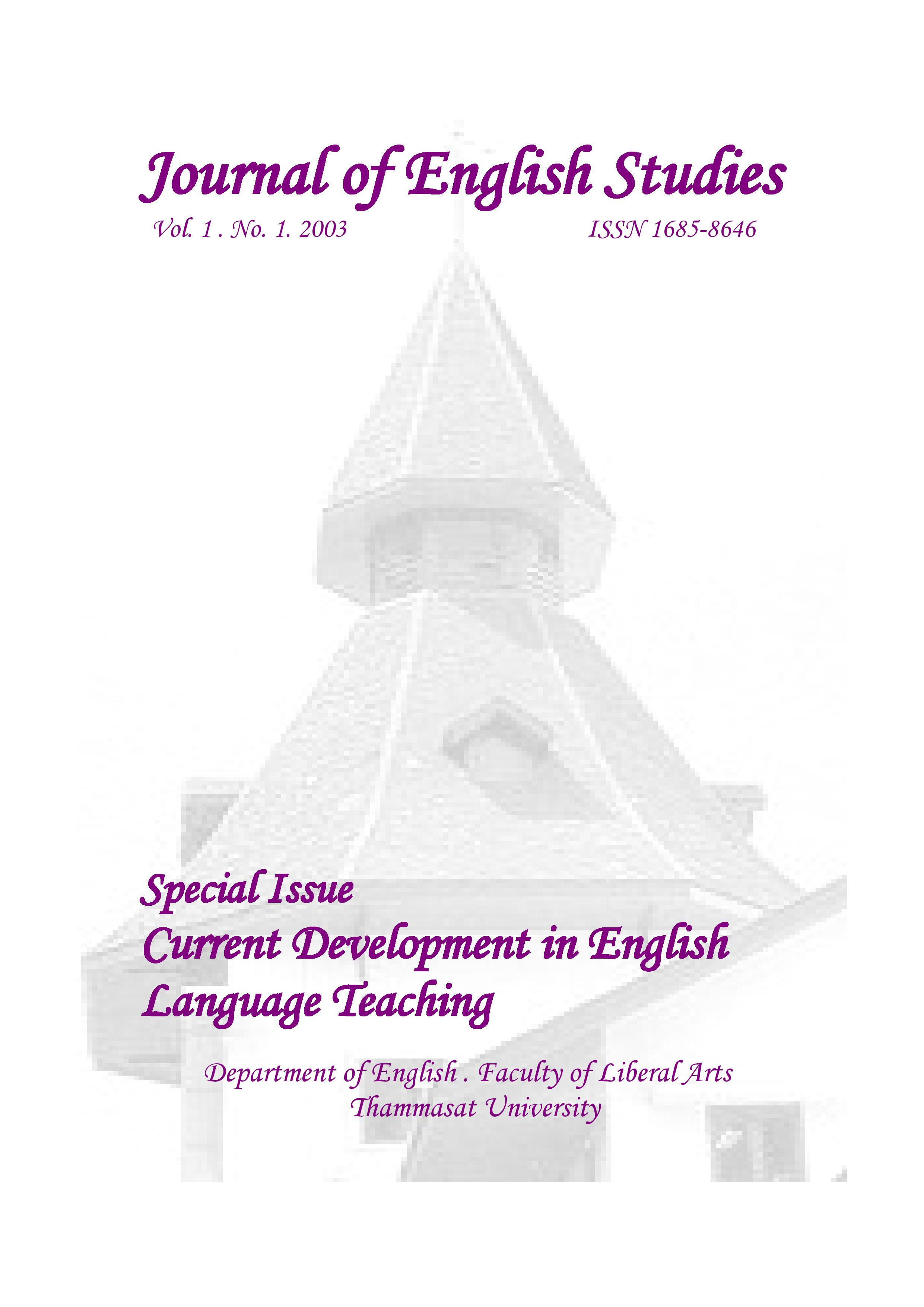Implications of E-mail in EFL Writing Instruction
Main Article Content
Abstract
This paper presents how EFL writing teachers apply the bits and pieces of e-mail-mediated writing instruction. First, teachers can put e-mail into use in EFL writing in many ways. Second, several lines of inquiry follow the positive claims of e-mail-enhanced writing. Third, the innovation may be of little benefit if teachers favor such innovation and leave some considerations behind. These might shed light on EFL writing instruction and teachers’ professional development.
Article Details

This work is licensed under a Creative Commons Attribution-NonCommercial-NoDerivatives 4.0 International License.
Authors who publish with this journal agree to the following terms: Authors retain copyright and grant the journal right of first publication with the work simultaneously licensed under a Creative Commons Attribution License that allows others to share the work with an acknowledgement of the work's authorship and initial publication in this journal. Authors are able to enter into separate, additional contractual arrangements for the non-exclusive distribution of the journal's published version of the work (e.g., post it to an institutional repository or publish it in a book), with an acknowledgement of its initial publication in this journal. Authors are permitted and encouraged to post their work online (e.g., in institutional repositories or on their website) prior to and during the submission process, as it can lead to productive exchanges, as well as earlier and greater citation of published work (See The Effect of Open Access).References
Balisle, R. (1996). E-mail activities in the ESL writing class. The Internet TESL Journal[Online serial], 2(12). Available: http://www.aitech.ac.jp/~iteslj/Articles/Belisle-E-mail.html
Boiarsky, C. (1990). Computers in the classroom: The instruction, the mess, the noise, the writing. In C. Handa (Ed.) Computers and Community: Teaching Composition in the Twenty-First Century. Portsmouth, NH: Heinemann.
Chetchumlong, S. (2003). E-mailimplementation in developing English writing skills. Paper presented at the 23rdThailand TESOL International Conference. Bangkok, Thailand.
Cohen, M., & Miyake, N. (1986). A worldwide intercultural network: Exploringelectronic messaging for instruction. Instructional Science, 15, 257-273.
Cummins, S. & Sayers, D. (1990). Education 2001: Learning networks and educational reform. Computers in the Schools, 7(1/2), 1-29.
DiMatteo, A. (1990). Under erasure: A theory for interactive writing in real time. Computers and Composition, 7, 71-84.
DiMatteo, A. (1991). Communication, writing, learning: An anti-instrumentalist view of network writing. Computers and Composition, 8(3), 5-19.
Grosz-Gluckman, V. (1997). A look at the use of electronic mail (e-mail) as a learning tool in the writing skills of adult LEP female students. ERIC Document Reproduction Service No. ED 416 720.
Hartman, K., Neuwirth, M. C., Kiesler, S., Sproull, L., Cochran, C, Palmquist, M., & Zubrow, D. (1991). Patterns of social interaction and learning to write. Written Communication, 81(1), 79-113.
Ivy, M. (1998). Activities for Using Junk E-mail in the ESL/EFL Classroom. The Internet TESL Journal[Online serial], 4(5). Available: http://iteslj:org/Techniaue/Ivy-Junkmail
Kinhead, J. (1987). Computer conversation: E-mail and writing instruction. College Composition and Communication, 38(3), 337-341.
Mabrito, M. (1991). Electronic as a vehicle for peer response: Conversation of high and low apprehensive writers. Written Communication, 8(4), 509-532.
Moran, C. (1991). We write, but do we read? Computers and Composition, 8(3), 51-61.Paramskas, D. (1993). Computer-assisted language learning (CALL): Increasing into an ever more electronic world. The Canadian Modern Language Review, 50(1), 124-143.
Ruberg, L. F., Taylor, C.D. (1995). Student response to network resources: Formative evaluation of two classes.Paper presented at the annual meeting of the American Educational Research Association. San Francisco, CA. (ERIC Document Reproduction Service No. ED 385 221)
Schmuck, R. & Schmuck, P. (1992). Group process in the classroom(6thed.). Dubuque, IA: Brown.
Singhal, M. (1997).The Internet and foreign language education: Benefits and challenges. The Internet TESL Journal[Online serial], 3(6). Available: http://iteslj:org/Articles/Singhal-Internet.html
Stroble, E. J. (1988). A look at writer’s comment shared on computer screens: Can electronic mail facilitate peer group response?Paper presented at the Annual Meeting of the American Educational Research Association. New Orleans, LA. (ERIC Document Reproduction Service No. ED 297 723)
Takayoshi, P. (1994). Building networks from the old: Women’s experiences with electronic communications. Computers and Composition, 11, 21-35.
Tannacito, T. L. (1998). Electronic peer response groups: Case studies of computer-mediated communication in a composition class. Unpublished doctoral dissertation, Indiana University of Pennsylvania.
Thongrin, S. (2001). E-mail and ESL/EFL writing: Extending the classroom walls electronically. Thai TESOL Bulletin, 14(2), 41-52.
Thongrin, S. (2002). E-mailpeer responses in collectivist Thai culture: Task, social and cultural dimensions.Unpublished doctoral dissertation, Indiana University of Pennsylvania.
Wang, Y. M. (1993). E-maildialogue journal in an ESL reading and writing classroom.Unpublished doctoral dissertation, University of Oregon at Eugene.
Warschauer, M. (1995). E-Mail for English Teaching. Alexandria, VA: TESOL.
Warschauer, M. (1997). Computer-mediated collaborative learning: Theory and Practice. The Modern Language Journal,81, 470-481.
Warschauer, M., Shetzer, H. & Meloni, C. (2000). Internet for English Teaching. Alexandria, VA: TESOL Publications.
Yagelski, R., & Grabill, J. T. (1998).Computer-mediated communication in the undergraduate writing classroom: A study of the relationship of online discourse and classroom discourse in two writing classes. Computers and Communication, 15, 11-40.


